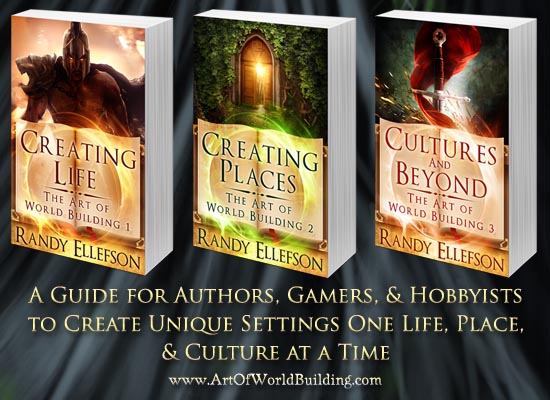In this three part series, we’ll look at creating races in fantasy books. This entry focuses on the physical considerations, while Part 2 will discuss the mental ones. Part 3 includes a downloadable template you can use.
While using the standard elves, dwarves, dragons, and other usual suspects in fantasy fiction is fine, and maybe even a wise idea, authors sometimes want to create their own races. As someone who’s created seven species (I use that term instead), I’ve listed some considerations that may help you do the same.
If you’re trying to decide between calling them races or species, another blog may help you.
Physical Considerations
One thing to keep in mind is whether any fantasy race will be able to masquerade as another. A giant spider can’t put on a cloak and sneak into a city as if it’s a human. Less extremely, a seven foot can’t do this as if they’re a three foot one; two three foot tall ones can climb on top of each other and possibly imitate the taller one, but you get the idea.
Humanoid?
There’s a tendency to create races that are humanoid, like elves and dwarves, instead of spider-like, for example. Humanoid species are fairly close to our own and we don’t have to figure out things like what they eat, how often they sleep, and other biological basics. They mingle well with humans, being able to live in similar buildings, use horses, and need fewer unusual physical things.
Would a giant spider sleep in a bed, or eat with utensils, or consume the same food? How would one travel if not on foot? Such considerations might be needed if you go this route. It could make things interesting in a hurry.
With a non-humanoid, the “weirdness” factor rises, so sometimes creators stick to only one for a prominent character, like Star Wars, where there’s only one wookie, Chewbacca. Non-humanoids arguably work better in a visual media (film and TV) because we don’t have to keep reminding the reader what they look like.
If you’re building a world for many fantasy books and stories, you’ll have more stories to explore and show what they’re like, but if they’ve made your books weird, the weirdness can also be a turnoff. If your world, and this race, will only be used once, being experimental is less of a risk.
The Body
Building a fantasy race starting at the body makes sense from an anthropological stance; our bodies come before our minds and habitat influences everything, especially physical features. A water-dwelling race likely has gills and maybe webbed toes, even fins. Something living in smaller trees likely climbs well, has an unusually strong grip, and might have a tail to help. If living in giant trees whose branches can be walked on casually, like in Avatar, then maybe not
The race’s skin color might be affected, too, if camouflage from predators matters. If they have little to fear, then perhaps the race is colorful in the manner of tropical birds.
Overall size and mass can help determine other aspects of your race, like strength, endurance, and capabilities. Enemies and allies will be also affected. For example, if your race is three feet tall, does it just run away from something over six feet tall, or do they swarm?
Have a fairly complete description ready to go even if you’ll seldom use more than a few lines of it at once (to avoid too much exposition). People sometimes prefer having a basic idea, not being killed with detail. As they read on, they’ll likely form their own slightly different picture anyway.
The Head
You don’t need me to tell you that pointed ears, slanted eyes, hair styles, round or square faces, pointed or bulbous noses, square jaws and chins, and brow prominence are just a few of the facial features you can manipulate. Try to have a decent idea before you just throw them together. Delicate or blunt features tend to go together. You don’t want it to seem like a mishmash that would look ridiculous if someone drew it, unless being weird is your thing.
It can be helpful to start with a known species and begin imagining variations.
Part 2
In Part 2, we’ll look at the mental aspects of creating races in fantasy books, including worldview and inter-race relations.
Follow Me
Official Site: http://www.randyellefson.com
Twitter: http://twitter.com/randyellefson
Facebook (as guitarist): https://www.facebook.com/pages/Randy-Ellefson-Guitarist
FaceBook (as author): www.facebook.com/RandyEllefsonAuthor
YouTube: www.youtube.com/RandyEllefson


Nice. I also love how some authors like Gene Wolfe and R. Silverberg have used speciation of humanity itself.
Pingback: Downsize your Fantasy Setting | M. Q. Allen
Pingback: Creating a Fantasy City, Part 1 | Randy Ellefson's Blog
Pingback: Creating a Fantasy City, Part 2 | Randy Ellefson's Blog
Pingback: Character creation questionnaires and Worldbuilding checklists | Doomsday Writer!
Pingback: Doomsday Writer!
Pingback: AROW80 Check-In: April 27, 2014 | Doomsday Writer!
Really well written, I usually follow similar steps about these things.
These seem really close with where I was heading (plus some things that I hadn’t really thought of on my own). Thanks!
Pingback: Creating a Fantasy City, Part 1 »
Pingback: With A Bit Of Clay | Scribbles in the Margins
Pingback: With a Bit of Clay | Amanda Witow
Pingback: Worldbuilding-Part 2 – Blogonteenz
Pingback: 20 Worldbuilding Questions: Race Edition – A Lilac Web
Pingback: Razze (e Specie) Fantastiche e Dove Trovarle – William H. Ribera